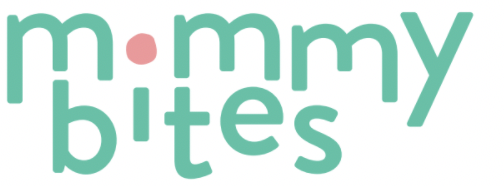Summer is a great time to encourage language and reading development in fun ways. Below are some suggestions for strategies and games that can help you support your child’s literacy development and prevent the summer slide.
Literacy Development Beyond the Bookcase
There are several dimensions to a literacy-friendly home environment. The number of books in a family’s home is strongly and positively related to children’s reading ability. However, this is not the only way to make your house a “literacy rich” environment.
Check out these fun ways to support reading and language development beyond the bookcase:
- Play Around with Words – Young children learn best while playing. Make sure you provide toys that encourage literacy development. Remember, these don’t need to be the latest tech toys with all the bells and whistles. For example, magnetic letters are a fun way to practice letter identification and letter sounds. Using letter blocks to build words is another fun way to practice literacy and spelling skills
- Set up a writing area for your child – Having all of her materials in one accessible spot will encourage your young child or kindergartner to write. Having a special writing box or even a writing table or desk will help your child to see writing as an important activity.
- Be a reader and writer yourself – One of the most effective ways to help children become readers and writers is to show them through your own example. Show them that you value literacy and that reading and writing have useful purposes. Make sure that you have a variety of printed and writing materials in your home, that you use them on a regular basis, and that you talk to your child about what you are doing when you read and write.
- Words on the walls – Children begin to ‘read’ (recognize and remember) text around them as young as age 2. This an important step in early literacy. Using environmental print helps them begin to recognize the relationship between words and a visual representation. Label items around your house (ex. bed, bookcase, clock, etc.) with text to help give words meaning for your child.
- Readers are Winners – Play word games such as Scrabble Junior, Boggle, ABC Bingo, Word Concentration, etc.
Story Time Strategies
Learning to read is not only about learning letters and sounds, but also developing a love of reading which can be fostered by parents and other members of the household. When families participate in nurturing and encouraging interactions with words, children are more likely to become immersed in reading. This then leads to children’s growing literacy skills and possibly a love for learning.
- Read in Front of Them – If parents “practice what they preach” about the importance of reading and writing, your children are more likely to pick up the habit as well. Share vocabulary, quotes, characters, and the story with them. Compare similarities and differences between your book and the books your children are reading.
- Identify reading opportunities outside of the home – Help your child notice people reading and writing all around them. Watch other people read. Count all the people on a bus, in a library or café that are reading. Read signs posted all around you.
- Recite nursery rhymes, sing songs, read rhyming books – Even though your baby will not understand them, hearing these will help her learn the patterns and rhythms of language. Read books that emphasize rhyming and alliteration or repetitive books with predictable phrases.
- Help your child pick independent reading books – Ideal books for independent reading should be books that children can read both accurately and smoothly and with good expression. Teachers and librarians can also assist you in finding appropriate books for your child. Visit bookstores and libraries with your child. Window shop as you pass a bookstore, look at the books and imagine the storylines inside them. Then go in and see if your predictions are accurate.
- Take the words off the page – Act out books and stories. Encourage your child to imagine or share stories from pictures in magazines, newspapers or family photographs. If it’s a scary story, tell it in the dark or read it with flashlights. The more fun reading and writing becomes, the more children will fall in love with literacy.
- Make up your own story – Have your children select three things they want to include in a story and make up a story that includes those three things. For example, the selections might be a princess, a race car, and an ice cream cone. The children will love helping you find clever ways to include three things in the story.
Cool Conversations
Parent–child conversations are an easy way to stimulate your child’s language and literacy development. The amount of language that young children hear is related to their vocabulary and language understanding. Studies have demonstrated that the quality of early language interactions have a significant impact on later language and cognitive skills.
- Elaborate conversational styles — Ask open-ended “why” questions with few repetitions and with few questions calling for yes or no answers. This will encourage the development of children’s semantic and print knowledge. These types of conversations can take place anywhere, anytime, including at supermarkets, parks, restaurants, public transportation, museums, and libraries.
- Introduce new vocabulary words when you talk with your child — When you use a new word, make sure to explain its meaning to your child. Continue to encourage your young child or kindergartner to ask when she does not know the meaning of a word.
- Talk about things that interest your child — Make yourself available to hear about what interests your child, whether it is her baseball game, ballet class or a lizard she found outside. Ask them genuine questions, listen to their answers and ask some questions that focus on how or why—not just what.
- Explain Everything — Make explanations part of your daily routine with your child. Encourage children to ask questions about what is happening in the world around them, and explain things in a way your child can understand. For example, explain why it’s important to tie your shoes, how you water flowers to help them grow, etc. By having these conversations with your child, you help your child understand cause and effect as well as allow them to practice critical thinking.
- Book Talks — Talk about your own childhood memories. Share your own favorite children’s books and authors. Also, share your successes and struggles in school and encourage your child to talk about their own successes and struggles.
Try a few of these tips this summer to help support your child’s literacy and language skills development. Do this effectively by building a few of these activities into your daily routine to help increase consistency. For example, practice letter sounds with magnetic letters on the refrigerator while preparing dinner each night, or look for two new words or signs every time you take a walk around your community. Get ready to have some literacy based fun this summer.
Stephanie Gamble, a certified teacher, has worked in the early childhood education field for nearly a decade as a master teacher and administrator, specializing in play-based learning. She believes that parents are a child’s first teacher and believes in empowering families with strategies and techniques to help them best support their children. Stephanie currently works as a coach for teachers, from preschool through high school.
Like what you read? JOIN the Mommybites community to get the latest on FREE online classes, parenting advice, events, childcare listings, casting calls & raffles, and our Parents With Nannies Facebook group. SIGN UP NOW!




